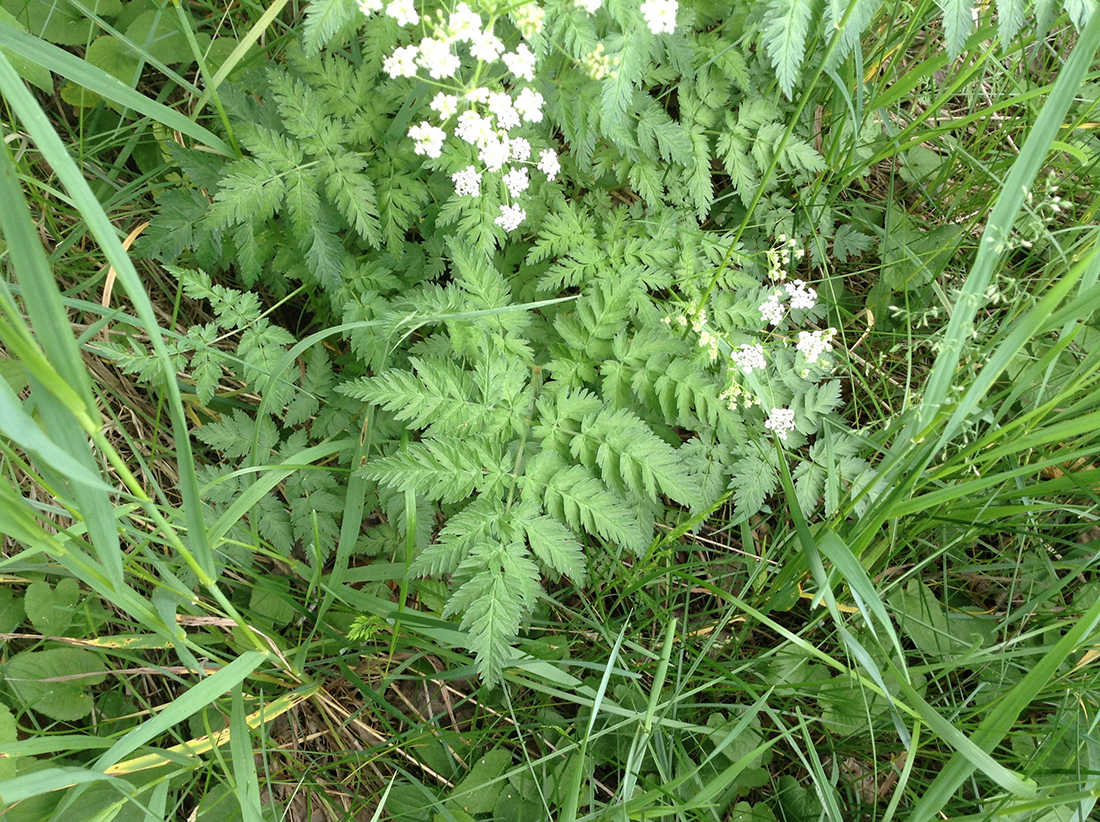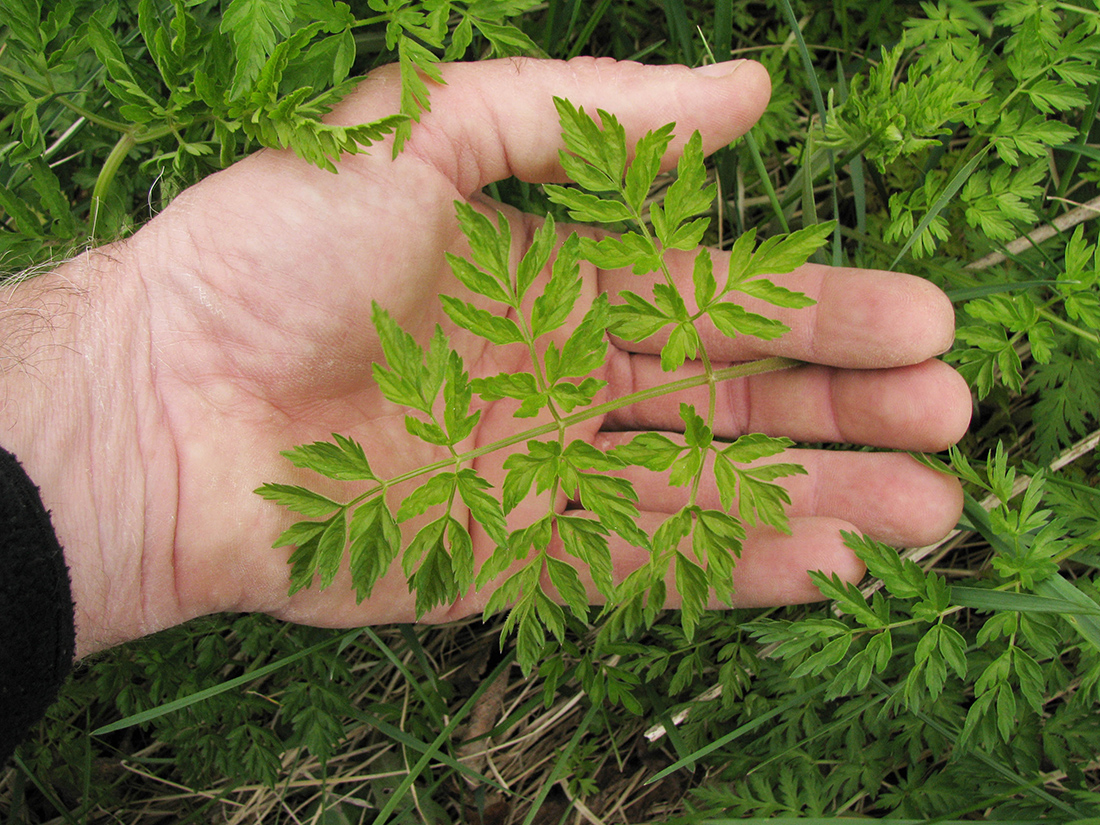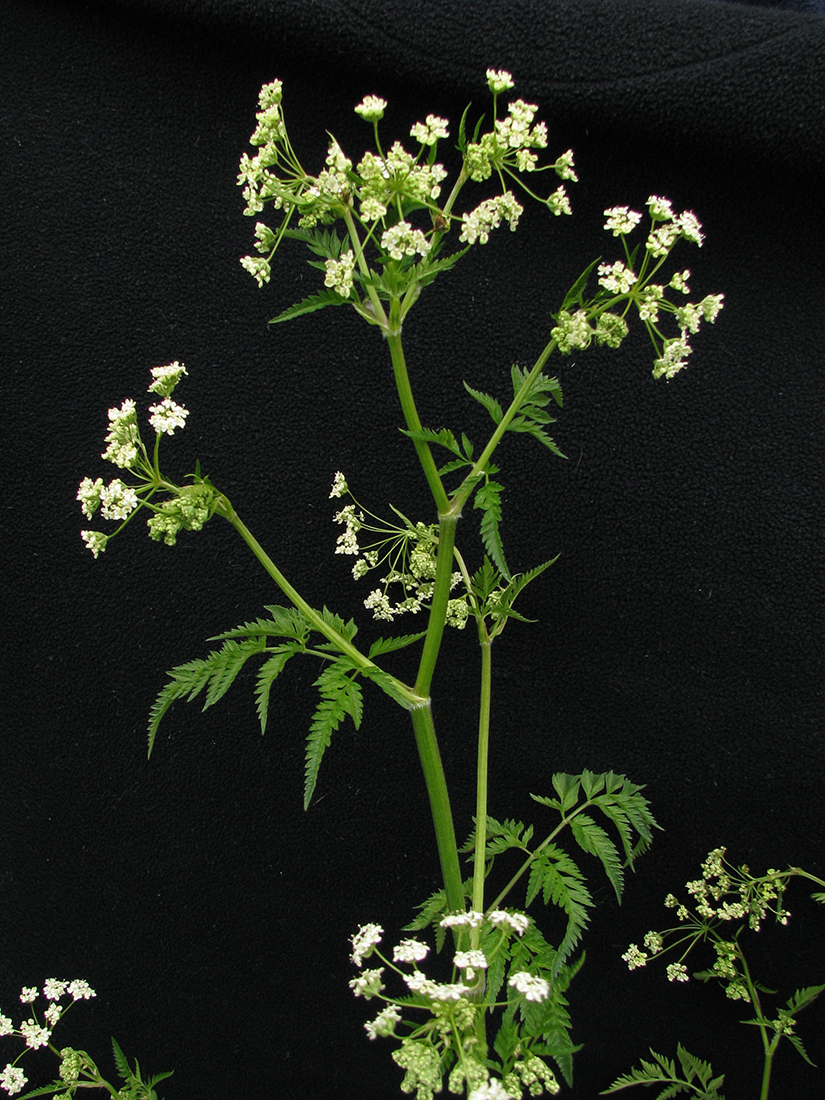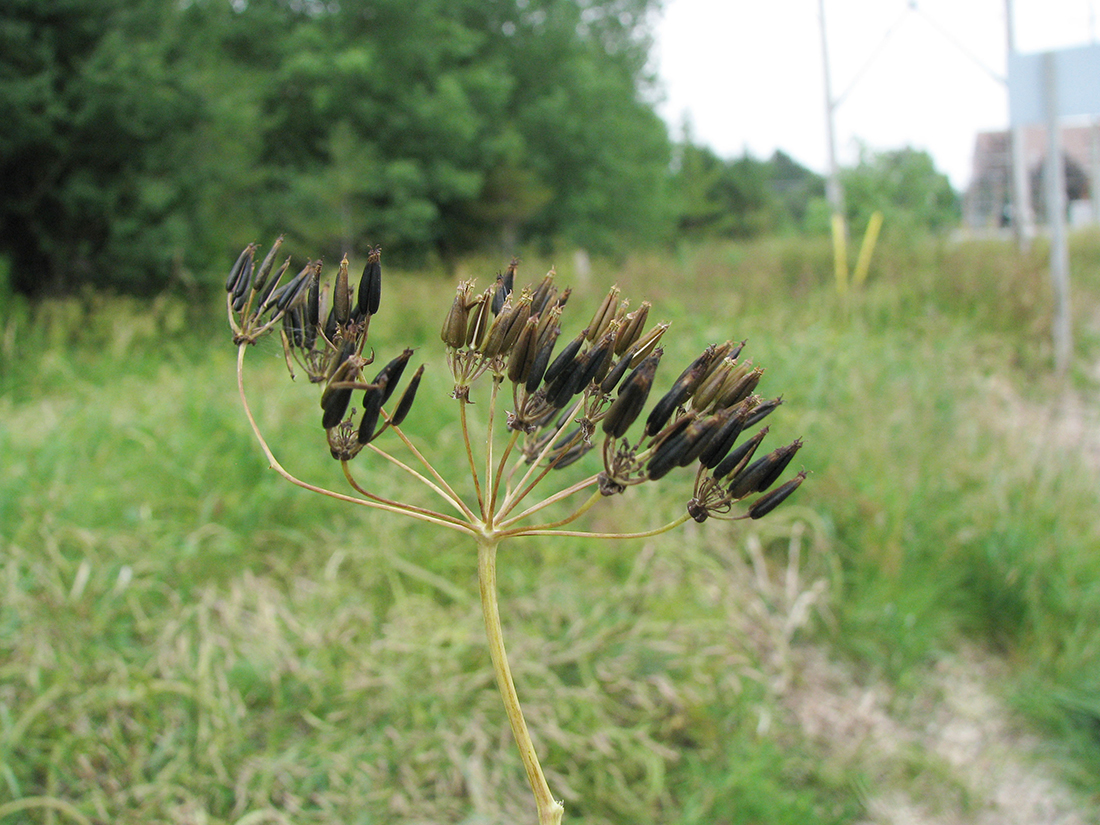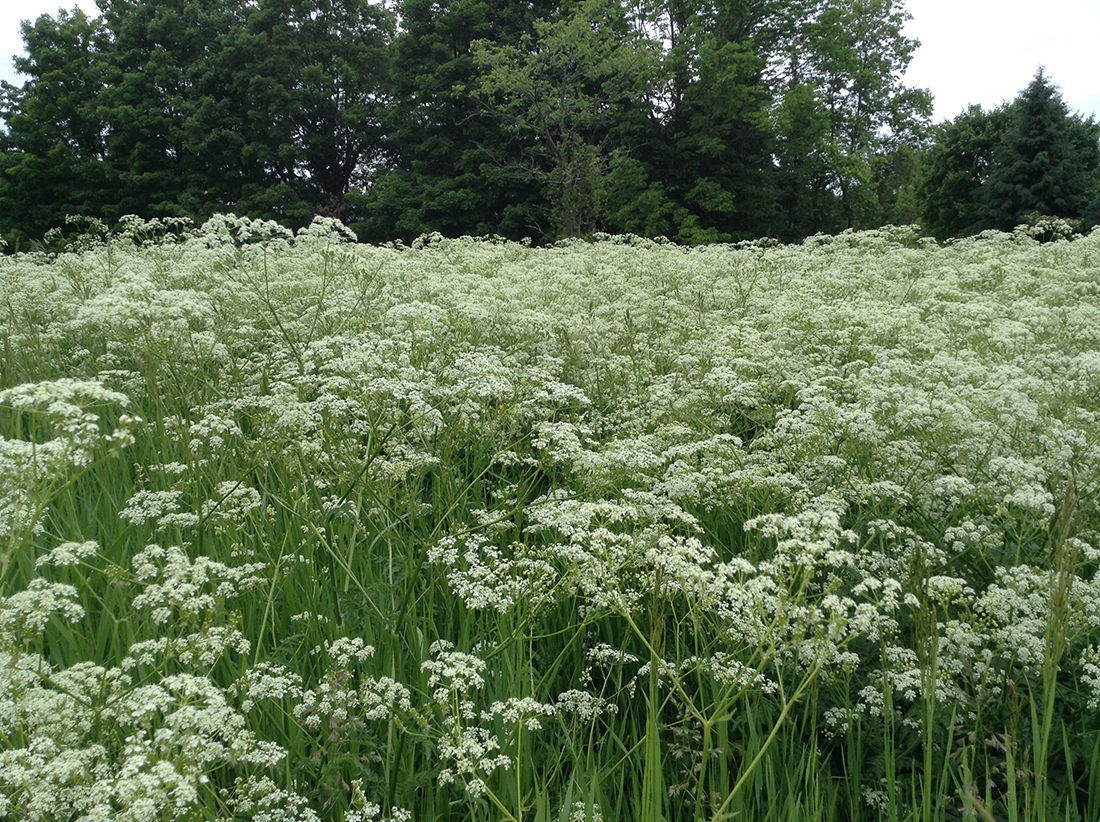Wild Chervil
- Carrot or Parsley (Apiaceae family):
- Anthriscus sylvestris (L.) Hoffm.
- EPPO code:
- ANRSY
- Other names :
- Chervil
Species information
- Lifecycle:
- Biennial or short lived perennial.
- Propagation:
- Reproduces by seed.
- Emergence:
- Cotyledons emerge in late April or early May.
- Range and habitat:
- Native to Eurasia, now spreading throughout North America. Grows in moderately disturbed habitats such as ditches, meadows, fields and hedgerows. Prefers wet habits but commonly found in sandy, clay or peaty soils.
- Competitiveness:
- Competes with forage crops for nutrients, water and light. Stems are slow to dry and can decrease crop quality.
- Toxicity:
- Wild chervil is not poisonous, but can be mistaken for other plants in the carrot family that are very poisonous.
Identification clues
Seedling
- Cotyledons:
- Linear-lanceolate, narrowing gradually at the base and lacking distinct leaf stalks.
Leaves
- First leaves:
- Rosette in the first year, made up of finely divided, fern-like and hairless leaves.
- Mature leaves:
- Green, fern-like and nearly hairless; divide into smaller leaflets giving the outline of the entire leaf a triangle-shape; leaf bases surround the stem.
Mature plant
- Stem:
- Green, usually without purple mottling; often under 1 m in height but varies between 0.5–2 m.
- Flowers:
- At the end of each stem; white and umbrella-shaped; small bracts at the base of the simple umbels, but no bract around the base of each of the individual rays; flowers from May to August.
- Fruit:
- Smooth and “banana-shaped”.
- Roots:
- Thick, tuberous taproots.
Often mistaken for
I know it's not Wild carrot because Leaves of wild carrot are very fine, “feather-like” and delicate-looking compared to wild chervil leaves. Wild carrot flowers curl upwards after they bloom and smells of carrot.
I know it's not Poison hemlock because despite similar umbels of white flowers and finely-divided leaves, wild chervil is a smaller plant and has green leaves and stems without the red-purple mottling that is present on poison hemlock.
I know it's not Sweet cicely because although the foliage is similar, sweet cicely has longer, sharply angled seeds and the plant is fragrant when crushed.
I know it's not Goutweed because unlike wild chervil, the leaves of goutweed are broader, usually have 3 lobes and are not fern-like in appearance.
